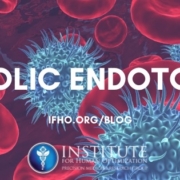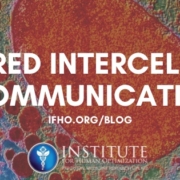CELLULAR SENESCENCE – When Cells Undermine Their Purpose
Our bodies have a built-in process that is believed to be a protective mechanism called cellular senescence. As we age, this process slows down and can result in disease.
. . .
The biological definition of aging is the many processes of cellular damage accumulation in the body. These are known in the scientific literature as the Nine Hallmarks of Aging. We’ve covered the first four, or primary, hallmarks: genomic instability, telomere attrition, epigenetic alterations, and loss of proteostasis, as well as the first two of the antagonistic: deregulated nutrient-sensing, and mitochondrial dysfunction.
The role of the antagonistic hallmarks is to respond to and block the damage caused by the primary hallmarks. Yet, when bodily conditions become chronic and/or aggravated, they end up contributing to cellular damage and can accelerate aging. The seventh hallmark, and third of the antagonistic, is cellular senescence. Senescence plays roles in normal development, maintains tissue homeostasis, and limits tumor progression. If you’ve read any of my blogs in the past, you know this is one of my favorite topics.
The miracle that is us
It varies depending on the cell, but the division cycle of a typical human cell averages 24 hours, which is mind-blowing considering the complexity of what takes place.
Figure 1: The cell cycle Courtesy: National Human Genome Research Institute
Our cell cycle has four stages:
· G1 (gap 1) stage: where the cell prepares to divide. This is the longest phase, where the cell is metabolically active and continues to grow, but does not replicate its DNA.
· S (synthesis) stage: where the cell copies its entire DNA.
· G2 (gap 2) stage: where cell growth continues and it organizes and condenses the genetic material and prepares to divide.
· M (mitosis) stage: where the cell separates the two copies of chromosomes into two daughter cells. This is the most dramatic stage, ending in the cell division in a process called cytokinesis.
A fine line between helping and hurting
In my best-selling book, The Longevity Equation, I point out that, “When your cells have had more than enough DNA damage, stress, and telomere shortening, they enter a state of growth arrest known as cellular senescence. This function is put in place to prevent damaged cells from turning into cancerous cells. However, in the process, it also stops allowing worn-out tissue to be replenished and rebuilt. Senescent cells often secrete inflammatory molecules that further damage the cellular environment, leading to chronic inflammatory conditions, including heart disease and osteoarthritis.”
Cellular senescence inevitably halts the cell cycle during the G2 stage, as a result of excessive intracellular or extracellular stress or damage, such as oxidative stress, DNA damage, and telomere erosion, or when they overexpress certain oncogenes (have the potential to transform into a tumor cell). Once this process starts, it is irreversible.
Similar to the other antagonistic hallmarks of aging, this process is meant to prevent the proliferation of damaged cells and helps to suppress malignant cell formation. However, as time goes by, our bodies begin to accumulate these senescent cells, which leads to the deterioration of the tissue repair mechanism that usually accompanies senescence.
Crossing the threshold
When a cell enters senescence and it stops producing copies of itself, it excretes hundreds of proteins, which in moderation in healthy tissue, signal the immune system to initiate cellular housekeeping, called autophagy, and start the repair process.
However, when disease and aging cause extensive damage in the tissues, senescent cells build up and stay in a state of suspended animation – not alive, but not quite dead. Some scientists call these twilight cells, and others go for a more Hollywood description of zombie cells because they can negatively affect surrounding cells if not cleared efficiently by the immune system.
Again, from my book, The Longevity Equation, “Unlike other damaged cells, zombie cells don’t self-destruct or clear out of the way to make room for healthy cells. Instead, they stick around and interfere with the body’s natural rebuilding and replenishing mechanisms. . .”
Senescent cells cross the threshold from being protective to deleterious when their accumulation causes them to excrete an overabundance of molecules like pro-inflammatory cytokines, growth factors, and proteases that affect the function of nearby cells and incite local inflammation.
Can we clean up the excess?
While there is no magic bullet and research is still learning how to extend our lifespan and our healthspan, studies on cellular senescence are very promising and it seems as though therapies are on the horizon.
“That getting rid of senescent cells is enough to effectively rejuvenate an animal—that tells you they’re a really important driver of aging,” says Lorna Harries, a molecular geneticist at the University of Exeter in the UK who studies cell senescence.
What else can I do?
The Longevity Equation provides a step-by-step blueprint to hack your genes, optimize your health and master the art of existence. In my book, I take an in-depth look at aging, explore what it means to extend your healthspan, and outline the pathways and factors that lead to a lifelong solution to the burdens of aging.
In collaboration with TruDiagnostic™, I have developed The Longevity Equation Epigenetic Consult. We are offering a revolutionary new way to access your health using an epigenetic test called TruAge™. This test will help tell you what your body is actually doing right now and what that means.
TruAge™ works by using mathematical models and a powerful algorithm to measure DNA methylation-based biomarkers. Methylation is what modifies the function of the genes in the body by adding what’s called a methyl group to DNA, which is what signals genes to turn on or off. DNA methylation is the best indicator of age-related changes and is the best-studied biomarker of age. This comprehensive testing method determines your epigenetic, or biological age, and can detect the acceleration of aging before the signs of aging even begin to appear.
The Longevity Equation Epigenetic Consult is intended to give you a snapshot of your biological age, as well as the lifestyle and environmental shifts you can make right away to start adding vitality and wellness into your life. Click here to schedule your consult!
More about The Institute for Human Optimization
The Institute for Human Optimization is committed to helping you create a personalized plan for living your longest, healthiest life possible. My team and I leverage the most cutting-edge advances in genetic testing, nutritional analysis, and functional medicine to get to the root biological imbalances that cause aging.
The Institute for Human Optimization was created with the intention of pursuing a highly personalized approach to longevity medicine to help enhance healthspan. Where lifespan is the actual number of years we’re alive, healthspan is how many of those years are spent in health and wellness.
We believe that a long healthspan – not just a long lifespan – is the most important thing you can cultivate. A long healthspan means you don’t miss out on life as you get older. It means remaining independent and having the vitality to travel and see the world. A long healthspan means that you can be there – in full body and mind – for the people who need you the most and that every day will feel like a gift.
We know that each person is truly unique. From DNA to iris, we all possess a blueprint that is genetically inherited and environmentally influenced. By gaining a deeper appreciation for the person on a molecular level and addressing the root causes driving disease, we can help promote optimized health through our unique scientific, N of 1, approach to individualized care.
The Institute for Human Optimization provides the most comprehensive, data-driven, personalized approach to wellness. It is:
· Predictive – We use genomics and advanced biomarker testing to risk stratification and empowerment.
· Personalized – We use data-driven health information to curate actionable change for disease mitigation and prevention.
· Preventive – We utilize highly individualized programs tailored to your unique genomic blueprint.
· Participatory – We empower engagement in personal choices, which allows for improved outcomes and enhanced results.
I am so excited about the possibility to support you on this cutting-edge journey to extend your lifespan AND your healthspan. Click here to schedule Your Longevity Equation Epigenetic Consult! Can’t wait to meet you!









Leave a Reply
Want to join the discussion?Feel free to contribute!